#free software principles
Explore tagged Tumblr posts
Text
well uh. Guess I'm not gonna be using unity for this game anymore?

#like the 20 cent thing would not apply to this game since it will be free but I plan on making other rpgs by reusing assets from this.#which will not be free lol.#and I doubt I would ever hit the threshold for the fee to apply but it's sort of also just a principle thing#so if anyone has suggestions for open-source software with a decent amount of stock assets I can use ermmm. Please let me know.
7 notes
·
View notes
Text
While I really hate the narrative of "tech bros" because of how it conflates shitty CEOs with non-shitty base-level programmers, and how it conflates Dunning-Kruger-y early adopters with people who Know Their Shit about computers...
...On the AI art issue, I will say, there is probably a legit a culture clash between people who primarily specialize in programming and people who primarily specialize in art.
Because, like, while in the experience of modern working illustrators a free commons has ended up representing a Hobbseyan experience of "a war of all against all" that's a constant threat to making a living, in software from what I can tell it's kinda been the reverse.
IE, freedom of access to shared code/information has kinda been seen as A Vital Thing wrt people's abilities to do their job at a core level. So, naturally, there's going to be some very different reactions to the morality of scraped data online.
And, it's probably the same reason that a lot of the creative commons movement came from the free software movement.
And while I agree a lot with the core principles of these movements, it's also probably unfortunately why they so often come off as tone-deaf and haven't really made that proper breakthrough wrt fighting against copyright bloat.
It also really doesn't help that, in terms of treatment by capital, for most of our lives programmers have been Mother's Special Little Boy whereas artists (especially online independent artists post '08 crash) have been treated as The Ratboy We Keep In The Basement And Throw Scraps To.
So, it make sense the latter would have resentment wrt the former...
2K notes
·
View notes
Text

This guide outlines my process for making gifs. I primarily make gifs for video games (Dragon Age, BG3), but I learned how to gif for kpop content (music videos, stage performances). The base principles outlined here should be applicable to any other media!
What I use
Avisynth
Adobe Photoshop 2025
Posts in this guide
Avisynth Basics – How to get high-quality resizing and sharpening for your gif.
Editing Basics – The basics of generating a gif with Photoshop.
(I'll update this list if I end up making more guides!)
Please feel free to reach out if you have any questions; I'll do my best to answer them. 🙌

A note on software…
This guide assumes that you’re using Adobe Photoshop 2025 to edit your gifs, since that’s what I use.
However, there are a lot of cheaper alternatives! You should do your own research to figure out what works best for you, but I started making gifs through ezgif.com.
Although a less powerful software like Ezgif results in a lower quality image file (gif), it’s a good entry point. Ezgif is helpful for making smaller, less detailed gifs! For example, these were some of the first gifs I ever made:
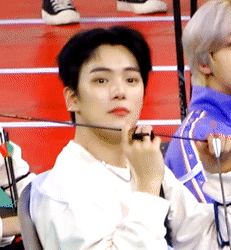
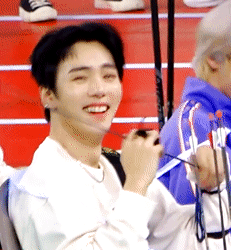
And I made them with just Ezgif! I had less control over the colors and sharpness, but Ezgif got the job done.
For comparison, this is the level of quality you should expect from more powerful softwares (Avisynth, Photoshop):


If this is the level of quality you want, then it might be worth investing in Avisynth, Photoshop, or both.
61 notes
·
View notes
Note
Do you have any animation software recommendations? I'm a beginner animator and i want to start learning.
There are a lot of options out there. I chatted with some of the crew to try to narrow down recommendations. There was something of a consensus that Clip Studio Paint is actually quite good as a beginner animation tool. If you work with digital drawing programs, it's overall UX will probably feel pretty familiar from the start. It's not overcomplicated, but it's still sophisticated enough to produce production quality work if you want to push it that far.
You can hone your animation chops in so many different ways, though, from TV Paint to a sticky note flipbook. I'd suggest a little experimenting to find what feels right to you. You can animate in Adobe Photoshop. The tools provided are fairly rudimentary, but there's nothing wrong with starting out plain and simple. You can animate in 2D with Blender's Grease Pencil tool too. And it's free. And maybe you can pick up some 3D skills in the process. If it's within your budget, Toon Boom is a very solid choice. It's what we use for Lackadaisy, and we know many, many other animated productions rely on it too. If you happen to like working with Procreate and you're comfortable with touch screen controls, give the new Procreate Dreams a shot. Prioritize your comfort and enjoyment in selecting a tool first. Once you have developed your drawing skills and understand the principles of animation, you get to take that knowledge with you to any other animation tool you decide to pick up next.
572 notes
·
View notes
Note
Do you think it's a good idea to try and get away from Google Docs when it comes to writing? I really can't afford any other fancy program to write my drafts in, and it honestly seems like the easiest - not to mention, most convenient - program to use to share my manuscript with beta readers. I could use advice on this matter because I keep seeing things across the net about it being a bad place to work on writing, but I have no idea what to turn to to make things easy for me and my future beta readers.
This is such a good question. Thank you.
So, a little backstory. Ever since Google removed their motto "do no evil" they have gone down the rather predictable path of all big players of the rot economy: putting profits over user experience.
A little while back, there was rumor that Google trains AI with the content of google docs, then they said they don't really, they only scan the content and do nothing with it, and then they started blocking access to documents with sexy images. Do we believe that Google has our own best interest at heart? That's something everyone has to decide for themselves.
Back then, I made a post with alternatives for Google Docs, you can find it here, also check the reblogs for more options:
Now, is it a good idea to switch from google docs? I think it is, but I'm also not consistent with it. As you mentioned, it seems to be the easiest to share writing with beta readers, and I also still often use it for fanfiction.
But there are alternatives, and they require very little adjustment in the process. Let me give you two free options.
Ellipsus is webbased, meaning you can write in it in the browser on any device. They have sharing, specifically for beta reading, and an export function for AO3.
Reedsy (marketplace around everything self-publishing) has an editor. It is webbased, and they also have an option for sharing with beta readers. This software is aimed at book type-setting and exporting but it works just fine for copying to web.
Personally, I'm currently switching everything to LibreOffice (also free!) files in some cloud connected folder. I used to do a lot of mobile writing on my phone with a bluetooth keyboard but currently, I'm taking my laptop everywhere so LibreOffice works great for me. If I have to use my phone or tablet for some lightweight mobile writing, on vacation for instance, I can still use something webbased.
So, I hope I gave you some interesting options. Do I think it's a good idea to make us less dependent on Google? Yes, I do. I don't trust them.
We have alternatives, and they cost us nothing more than a little adjustment.
~ barbex
#writing software#writing tools#alternatives to google docs#barbex gives advice#ellipsus#reedsy#google docs#libre office
46 notes
·
View notes
Text
@vole-mon-amour very kindly asked me last week if I had any tips for keeping cross stitch neat. (Thank you so much for the kind words!) I've realised I could write an essay on what I consider to be the best cross stitch techniques, but since I have ADHD it will take me a ridiculously long time to write said essay and then I'll get stuck on trying to figure out the best software to draw stitch diagrams and it just won't get done at all. >_> So instead I offer this short illustrated version with some tips that I've personally found work well for me. My illustration samples are worked on binca so it's easy to see, but the principles are the same on any fabric. So, here we go:
~~~
- I always separate my floss strands one by one and then lay the number I need back together. Pulling out two or three at once and then sewing with them like that adds a bunch of twist and tangling that makes the stitches look bumpy.
- I stop and untwist my thread regularly to get rid of any excess twist.
- Further to the above, I make sure that if I'm using two strands as is usually the case for cross stitch, they lie parallel to each other in each stitch. This is easy to do by gently separating and steering the strands with the edge of your nail as you pull the stitch through. The picture below shows the difference it can make (I used two colours so it's easy to see) - parallel on the right, pulled through without separating on the left:

- I make sure the second stitch of each cross points the same way each time; and if there are any half stitches, I point them the same way as the second stitch of the crosses, not the first stitch. So, as in the above picture, I've worked the upper-left/lower-right diagonal first, then the lower-left/upper right diagonal second; any half stitches would also be lower-left/upper-right. This gives the finished piece a nice consistent sheen, as the light hits all the stitches at the same angle.
- I try never to overlap or split one stitch with another, and to make sure each stitch is in not just the correct hole, but its corresponding corner of each hole. See below - I try to make sure each hole looks like the centre hole of the version on the right, not the one on the left:

This can require a bit of careful poking with the needle to get each stitch to come out on the correct side of the ones already in a hole, but I find it worth the effort.
- I always work each stitch as a single entity - I never do the Danish style where you do a row of half crosses and then come back to complete it, because I don't like the effect it has on the tension to have all the stitches on the back pulling the same way. I prefer to have a fairly even mix of stitch directions on the back - down, across, and diagonal. This also frees me to think about exactly which way and in which order I'm going to place my stitches, which makes the next tip easier:
- Wherever possible, when I'm choosing which of the two possible holes to come up and go down through for a given diagonal stitch, I will come up through the hole with the least stitches already in it, and go down through the one with the most stitches already in it. This tucks the existing stitches down neatly as I complete the new one, instead of pulling them up. If I absolutely have to come up through a hole that already had the other three stitches in it, sometimes I'll poke the needle back in a little from the front when the stitch is finished, just to nudge everything back down.
~~~
I do have more thoughts than these, but I'd need more diagrams and illustrations to explain things like my preferred stitch order and working patterns; if people want to see those (and can recommend any software that's good for drawing stitch diagrams!) I would be happy to give it a go but it would take me a while longer. Thank you for reading and I hope something here is helpful to you!
35 notes
·
View notes
Text
Ad | Some Humble Bundle Goodies
One for the audio engineers - The Audio Arcade bundle gives you a whole bunch of royalty-free music and SFX as well as plugins to insert in all the major game engines. Ambient tracks, environmental sounds, explosions, you name it.
Money raised goes towards Children's Miracle Network Hospitals.
For those who dabble in Virtual Reality, the Upload VR Showcase with Devolver Digital has a bunch of Serious Sam VR games as well as the Talos Principle, a really solid puzzle game.
Money raised goes to Special Effect which helps people with disabilities enjoy games via accessible controllers. I've seen the stuff they do and it's honestly great.
Want to get into programming but don't know where to start? The Learn to Program bundle has a tonne of resources covering everything from HTML and CSS through to Python, C# and Ruby.
Money raised goes towards Code.org which seeks to expand participation in computing science by helping women and students of colour.
The Future Tech Innovators Toolkit is a software bundle with courses on Robotics, Electronics and programming with Raspberry Pi and Arduino.
Money raised goes towards Alzheimers Research UK.
The Home How-To Guides bundle offers a complete set of books for home improvements and projects. Want to know more about plumbing, home repair, bathrooms, wiring or carpentry? This bundle has you covered.
Money raised goes to It Gets Better, a charity that supports LGBT Youth.
Want to pick up the latest Elden Ring DLC? It's also available on the Humble Store with the key being redeemable on Steam.
105 notes
·
View notes
Note
After seeing your weatherbugapp reblog i installed duckduckgo and tried it.

I don't know much about technology tbh but i downloaded this app less than 30 mins ago and in that time google tried to track me 112 times?? And they tried to collect finger prints? And my first and last name? And my gender? And my country, state and city? My gps coordinates? My postal code? My network carrier? My fricking battery level for whatever reason? Can you please tell me if this is normal at all, because i'm freaking out right now. I just turned 18 and started using mobile banking and stuff and this shit scares me
Why tf does it need to know my screen density???my system volume????my charging status????? What tf are they cooking
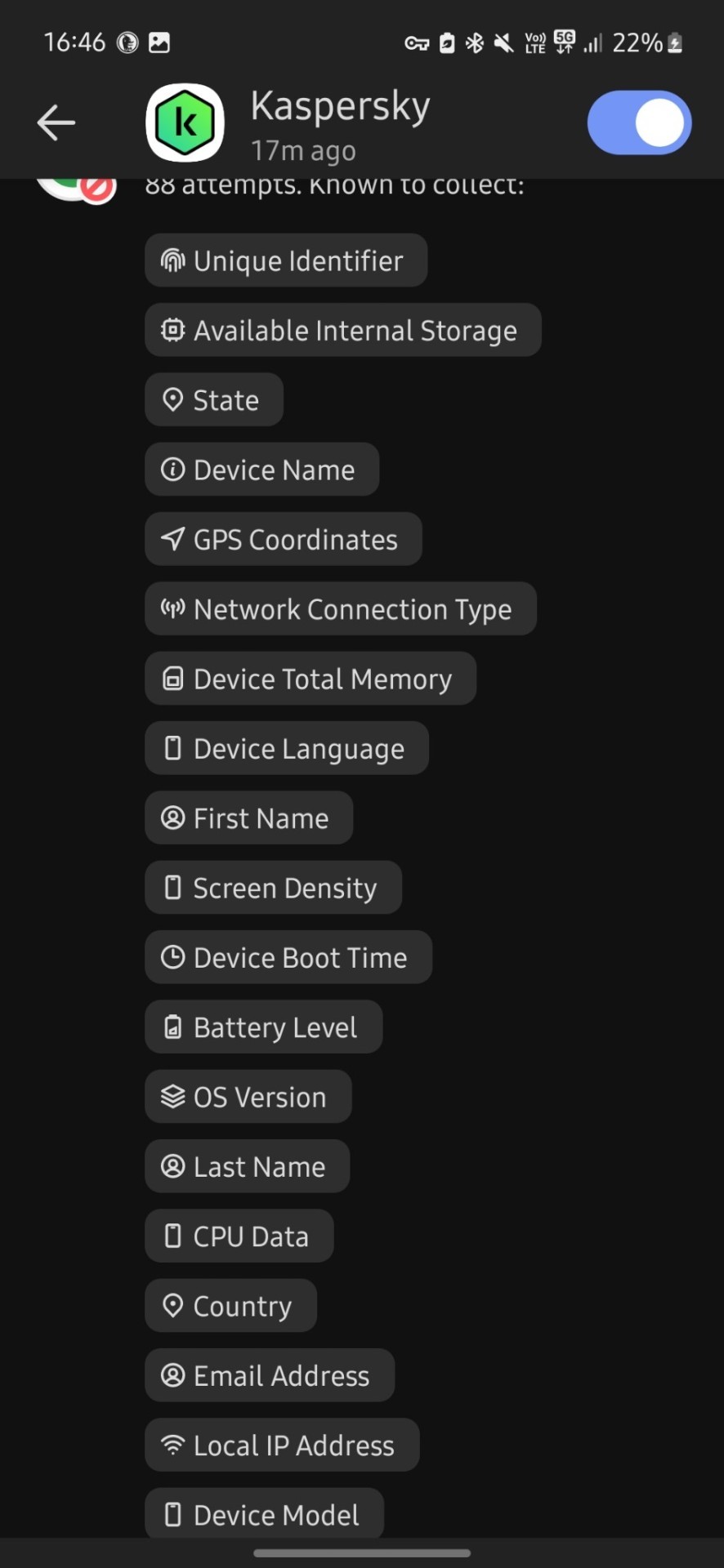
Now it's at 476 tracking attempts bro???? barely 5 mins passed.....
I condensed your three asks into one for readability!
And yeah, I'm very far from an expert about any of this, but as far as I know that's just. Normal. That's the normal amount of spying they're doing on your phone. I assume the numbers we see are to some extent because having been foiled, a lot of these scripts try repeatedly, since I can't imagine what use thousands of trackers per phone would be even to the great aggregators.
Tracking the phone stuff like screen resolution and battery level is because (apart from that definitely not being considered remotely 'private' so it's Free Real Estate) in aggregate that data can be used to track what phone use patterns are like on a demographic scale and therefore. Where the smart money is.
Almost all of this is getting sold in bulk for ad targeting and market analysis. This does presumably make it very hard to notice when like. Actually important stuff is being spied on, which is why I feel better about Having Apps with the duckduckgo app blocker thing.
My bank's app reportedly sells data to a couple aggregators including Google. Not like, my banking info, but it's still so offensive on principle that I avoid using the app unless I have to, and force stop it afterward.
The patterns that show up on the weekly duckduckgo blocker report are interesting. Hoopla attempts about two orders of magnitude more tracking than Libby, which makes sense because they're a commercial streaming service libraries pay by the unit for access, while Libby is a content management software run by a corporation that values its certification as a 'B' company--that is, one invested in the public good that can be trusted. The cleanness of their brand is a great deal of its value, so they have to care about their image and be a little more scrupulous.
Which doesn't mean not being a little bit spyware, because everything is spyware now. Something else I've noticed is that in terms of free game apps, the polished professional stuff is now much more invasive than the random kinda janky thing someone just threw together.
Back in the day you tended to expect the opposite, because spyware was a marginal shifty profit-margin with too narrow a revenue stream to be worth more to an established brand than their reputation, but now that everyone does it there's not a lot of reputation cost and refraining would be sacrificing a potential revenue stream, which is Irresponsible Conduct for a corporation.
While meanwhile 'developing a free game app to put on the game store' is something a person can do for free with the hardware they already have for home use, as a hobby or practice or to put on their coding resume. So while such apps absolutely can be malicious and more dangerous when they are than The Big Brand, they can also be neutral in a way commercial stuff no longer is. Wild world.
But yeah for the most part as far as I can make out, these are just The Commercial Panopticon, operating as intended. It's gross but it probably doesn't indicate anything dangerous on an individual level.
56 notes
·
View notes
Text
Writer's Talk
Dear Writer Friends,
as Google Documents is no longer safe to use, you might want to consider @ellipsus-writes. It's a collaborative writing software, currently in beta stage, with a very firm anti gen AI policy.
It's free to use and comes with an Export to AO3 button
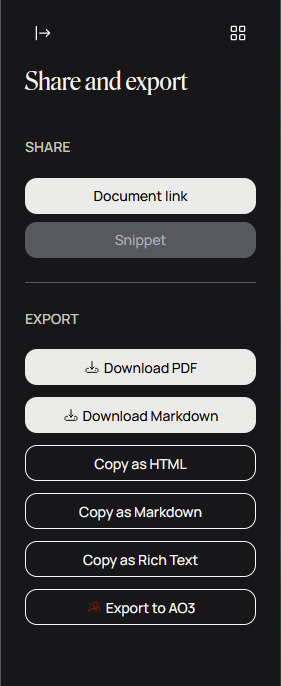
#ao3 fanfiction#gale dekarios fanfic#bg3 fic#bg3 fanfic#bg3 fanfiction#bg3 fanfic writers#writers of tumblr#writer community#writers on tumblr#writerscommunity#ao3 author#ao3 writers#ao3 community#fic writing
26 notes
·
View notes
Note
I have a question and you might’ve been asked before, but animation, do you have any tips for beginners? Love your content btw 🥰
Even tho my degree is in animation I must be honest…😬 nowadays I very often don’t have the patience for anything more complicated than animatics. So I’m trying to stick to tried and true advice lol…
Probably the biggest tip would be that, yes the beginner exercises may be boring, and not look very cool, but they are essential to getting those skills you need down. The flour sack exercise, the wave principle—doing squash and stretch, and timing studies to really nail the way that movements should “flow” properly. These are absolutely necessary skills to master if you want to make fluid animations.
Planning is also another important, but sometimes overlooked aspect of animation. Some ppl (read:me) wanna just jump straight to animating. But planning in those first simplest stages really helps save you headaches in the later stages, when things are getting more complicated and all over the place. Storyboarding helps you plot your timing, choosing where key shots will go, camera angles, pacing ect.
And speaking of camera angles. STUDY STUDY STUDY cinematography! Something doesn’t have to be animated for it to be applied to animation. Perspective is a massive beast to tackle once you start storyboarding and unless you want boring shots and stagnant compositional framing, you need to learn all the ways you can frame a scene and your characters! Idk if you’re up for watching some horror movies, but those are a great source to pull from, as they tend to always frame, pace and even light their shots in really interesting and dynamic ways!
It’s also great to practice with free programs before you spend money on things like a subscription for photoshop or any other fancy software. Most interfaces are similar enough, that beginning with something free like Rough Animator or Blender can give you some good practice before you commit!
That’s all I can think of right now! And sorry if that wasn’t exactly what you were looking for…if you want me to try to give more specific advice on something just drop me another ask—I’m willing to keep rambling on!
Lastly, just few good videos I have saved!
Good traditional habits for digital animators <- basically Toniko Pantoja’s whole channel is a goldmine of knowledge!
Drawing figures in perspective
Every Frame A Painting is also a great channel for breaking down film/composition/writing—there’s a video for virtually every aspect of cinema
-Chuck Jones -the evolution of an artist
-Akira Kurosawa- composing movement
-Satoshi Kon- editing space and time
187 notes
·
View notes
Text
April 15 Provides A Wonderful Lesson On How Government Conditioned Americans To Tyranny
Paul Craig Roberts
Americans have become so accustomed to living under tyranny that they are probably incapable of recognizing tyranny. Once upon a time, April 15 was the annual day of infamy. It was the day you had to pay your income taxes.
Americans have been subjected to a tax on their working lives for less than half of their existence as a free people, or, to correct myself, as a former free people. With the gradual long-term demise of American education, helped along by the US Department of Education, the content of what Americans know has dramatically changed. Once they knew who they are and the principles on which their liberty rested. Today they know how to play video games, write software for programs that regulate their lives from instructions their cars give them to how the NSA and businesses spy on them. They know movie trivia, the affairs of celebrities, the standings of their college football teams, their golf scores, and the expense of their wives’ remodeling of kitchens and baths.
But they don’t know much else, except the Democrats know that Trump is evil. And America and white people are racist and evil. And there are many genders. And illegal immigrant-invaders have the same, or greater, rights as American citizens. Just ask any Democrat federal district judge. And still Americans vote for Democrats. In other words, the question is: Are the American people capable of self-government?
The historical definition of a free person was a person who owned his own labor. Historically most people were not free. They were either slaves of serfs.
18 notes
·
View notes
Note
Hi! I dont know if this has been asked yet but you got any tips in animation for starters? Ive been pretty much inspired by your anims so I wanted to ask!! :D
Hello! Thank you for the ask.
First is to study anatomy. Having a good understanding of it is crucial and will save a lot of headaches down the line. You can start by drawing basic shapes, then making the shapes 3 dimensional.
When you start getting the hang of drawing boxes and cylinders, you can now start figure drawing.

This has helped me understand how the body works. And I was figure drawing almost everyday, giving myself 60 to 30 seconds to draw a pose reference. What you're doing here is training your muscle memory.
Next you can now start animation, it all boils down to Animation theory. Which are the following

Feel free to research on each principle!
The next one is watching and studying your favorite animated shows. My favorite ones to study are Mob Psycho, Attack on Titan, Arcane, and Disney films. There are a lot of differences between Western and Japanese animation, as most Western shows will try to apply the animation principles and will stick to 12-24 frames a second, while Japanese animation will have limited frames.
----- Bonus:
If you've been wanting to start a meme animation, just picking the right video editing software makes all the difference.
My last few tips are to HAVE FUN and it's natural to feel discouraged at times. Animating is a very arduous job/hobby and takes weeks to finish 3 seconds. But as long as you enjoy every bit of it and know how to take breaks, you're on the right path.
111 notes
·
View notes
Text
No-Google (fan)fic writing, Part 5: Obsidian
Storytime
In terms of how long I’ve been using Obsidian, well. Currently, a little more than a week ^^ And I’ll be honest, I’ll probably only use it for writing fic sporadically, because it’s proprietary software and I prefer Open Source (and I also love LaTeX too much, but that’s a different question).
The reason why I decided to give it a try in terms of writing fic was that I’ve been talking with others about moving to Markdown, Obsidian is Markdown-based and I’d been playing around with it in a different context for a while already. So, out of curiosity, I decided I’d try to write a story in Obsidian and see if it could live up to my demands.
Word/Google docs versus Obsidian
Again, Word and Obsidian do not work in the same way. If anything else I have described here so far can be compared to the way Obsidian works, it’s Zettelkasten. The same principle of “one note for one idea/scene/thought” also applies to Obsidian. Also like Zettelkasten, Obsidian relies heavily on connecting these notes by way of links, using tags to categorise/find specific notes and it also has the same feature of using folders for collecting “sub-notes”, which can be used for structuring in the same way the virtual desk is used in Zettelkasten. Actually, I would say that the main difference between those two is that Obsidian uses Markdown and a folder-with-subfolders structure, whereas Zettelkasten has its own file format and relies on XML behind the scenes.
Cost
The personal use version of Obsidian is free, so technically +1 for that. However, Obsidian is not Open Source. It is not free in the same way Writer, LaTeX, Zettelkasten and Markdown (= many MD editors) are free, the code behind it is proprietary. This does not have any impact on the cost, at least not at present, but there is a chance that at some point, the developers might choose to charge for private use of it. I think it’s unlikely, but. Just so you know.
File formats
Unlike Word, however, Obsidian relies on Markdown as its file format and stores every “note” as a separate .md-file in a folder. The “notebook” where all notes are collected is called a “vault” and it’s just one big folder with lots of subfolders. In other words, even if the software is proprietary, the files can be read and used without needing Obsidian itself. Which is really great, because again, it means you have plain text .md-files with your ideas, scenes and stories, and they wil be readable even if Obsidian as an app disappears.
+1 for that!
Features
What you need Obsidian for is the features. And of those, there are many. I’ll save words and say, read about Markdown features like bold, italics etc. here, but I really do want to talk about other features Obsidian offers that plain Markdown with an editor does not.
Firstly, an important feature that I talk about a lot is the export function. AO3 needs either HTML or RTF, fanfiction.net ODT or DOC(X). Obsidian can export to all of these, provided you install the Pandoc plugin. This is not the same as installing Pandoc on your computer; you need to install the plugin in Obsidian itself to use it. But as long as you do, you can export to whatever you like.
+1
Another feature very important for me when I tried Obsidian was whether outcommenting would work (again, I’ve talked about this here). Basically, what that means is that parts of the text are not exported when you export the rest of the note – such as comments to yourself, notes on what you still need to write in a scene or simply – as I use it frequently – stuff you wrote and don’t want to delete, even it doesn’t fit anymore. Much to my delight, it works in Obsidian as well, again because it’s Markdown and it works in Markdown. [text you want outcommented]: # will do the trick.
+1
Lastly, another plugin I would recommend is Smart Typography. It “[c]onverts quotes to curly quotes, dashes to em dashes and periods to ellipses”, as the description says, and that’s really useful if you use a regular keyboard layout to write, where you get the standard ' and ".
+1
Installing both the Pandoc and Smart Typography plugins is easy. Open the Obsidian vault settings (the little wheel you can see in the left lower corner, to the right of “example”, which is the name of the vault), Third-party plugins (which you need to enable) and then browse Community plugins by name and install and enable them. Done.

Now for the most important part: putting together a story.
If you want one big vault containing all of your stories, you need to create “folders” for every story and then store the single notes for that story in that folder. Personally, I prefer to have one vault per story, because I find it a lot easier to focus on working on one story at a time if I don’t have several other stories in the same vault. This, I want to note, is different to how I used Zettelkasten, where I generally had one big Zettelkasten containing all of my stories for a specific fandom. I don’t know why that’s different with Obsidian, it’s just that way.
In any case, the following examples are for when you have one story per vault. In this case, I’ve decided that I’m going to write a story involving the POVs of three different characters. I’m going to keep their respective pieces sorted by character, so I always know who’s talking right now. Every scene where that character is the main narrator gets its own note within the respective character folder.

This, in theory, is no different than what I do with regular Markdown. What is very useful in Obsidian, however, is that Obsidian offers the possibility to “embed” notes in other notes.
And that, in turn, means that just like with Zettelkasten, you can use one note to put together the whole story and move around scenes without ever having to worry that you’ll accidentally delete and lose texts while copypasting.
It works like this: [[name of note]] establishes a link from one note to another (useful if you want to connect different ideas). If you add ! before the brackets, like so: ![[name of note]], it means that the whole text of the linked note will now be embedded in the note with the link. Which will give you this:

And, because you’ve installed the Pandoc plugin, this will now allow you to export the note named “complete story” to HTML, ODT or whatever, and all of the linked notes will be exported into that file. You need to change the order of scenes or move one scene from chapter 1 to chapter 2? Just delete ![[name of note]] in chapter 1 and put it in chapter 2. You can also insert horizontal rules, by the way, which I have done here. These will also be exported.
If you need your story structured in chapters rather than as a whole, the process is analogue: one note per chapter, where you !-link all the scenes that belong to the chapter in question. Then, if you want it as a whole, create a note where you !-link the notes for the single chapters, done. Export at your leisure.
Embeds are hands down in my opinion the best feature Obsidian has. They offer a distinct benefit over other Markdown editors like Ghostwriter, KATE or Notepad++, because Markdown, other than LaTeX, does not come with a feature that would make it easy to include “child files” in a “parent Markdown” file that only includes the header and the child files in the order in which they should appear in the final output document. Thus, none of the three editors I like to use for Markdown can show me the whole story if I decide to create a separate file for each of the scenes, and that is really annoying, because it means that I’m back to cutting and pasting pieces of text from one part of my Markdown document to another. Which in turn increases the probability that I will lose something, and well. See Zettelkasten as to how I feel about that.
So that is definitely an extremely useful feature deserving a big +1 because like with Zettelkasten, it means you can move the order of your chapters and scenes around without running the risk of losing the actual text.
Interface
Something I find quite enjoyable is that there are a lot of “skins” made by the community that can be applied to Obsidian. This is important to me because, as the previous instalments have probably shown, I’m a big fan of simple, clean, customisable interfaces. I’ve tried several of the community-made skins already, and my current favourite is Cyber Glow – but there are also others I’ve found quite nice.
Again, skins can be installed via the wheel/settings button, and just to show it, the below is the vault from above with Cyber Glow enabled.
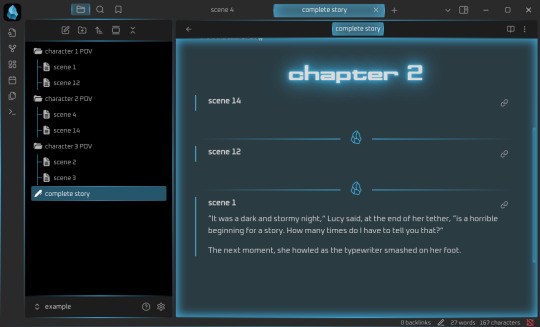
Syncing
One of the big benefits of Obsidian is that it comes with a syncing service. Yes, you don’t need anything else, you can just create an Obsidian account and your notes will be synced across your devices, even on mobile devices. And file versioning is an option (I’ll get to that in due time). And that is really great, because it’s a one-in-all solution.
If you don’t need or want that, you don’t have to sign up for it. You can also continue syncing your Obsidian vaults with your preferred service (Dropbox, OneDrive, GIT, USB etc.). But you can and it’s at least nice to have the option. Downside: sync is a paid-for service, starting at 4$/month for 1GB of storage. Which isn’t a lot generally, except you’re writing plain-text/Markdown, so your files are Kb-tiny in most cases, and it takes a lot of Kb-sized files to fill up 1GB.
Personally, I will say that I’d much rather pay 4$ a month and know that my stories are not going to be scraped for AI, but it’s really a decision everyone has to make for themselves. Just remember – if you aren’t paying for the product, you are the product.
Ease of use for Word/Google doc-users
It’s not intuitive in the same way as moving from Word to LibreOffice Writer is. At least having a look at some Markdown guides (linked over there) is important if you are going to use Obsidian. But as I wrote there already, Markdown takes you about half an hour to learn, if you don’t know it already. And yes, you’ll have to wrap your brain around the concept of “one note = one thought/scene/idea” as well, but honestly? In terms of cost-benefit ratio, Obsidian is probably one of the most rewarding transitions you could make if you’re looking to get away from Word/Google docs. My only gripe with it is really that it’s proprietary software, but otherwise? Definitely recommended.
Read No-Google (fan)fic writing, Part 1: LibreOffice Writer
Read No-Google (fan)fic writing, Part 2: Zettelkasten
Read No-Google (fan)fic writing, Part 3: LaTeχ
Read No-Google (fan)fic writing, Part 4: Markdown
#degoogle#no-google (fan)fic writing#fanfiction#fic writing#fanfic writing#degoogle your fics#degoogle your writing#software recommendations#resources#obsidian
9 notes
·
View notes
Note
Haii, Sosaaa! Okay, so i wanna get into animation BUT I'm really new. Lucky for me I know someone who's awesome at animating (that's you btw) so I need your expertise. What program do you use, and also do you have any tips for a newbie?
Aww Jay, you flatter me~✨but before answering I must put the disclaimer that I'm just a hobbyst animator with no formal training, that during quarintine thought "Oh woah, these Multiple Animation Projects that people do in YT are so cool! I want to join them!" and started learning by herself. Take everything I say with a grain of salt.
First things first: I mainly use TV Paint. However I'm not letting you spent money on paid stuff you don't even know you'll like, so here are some free alternatives that I've used as well:
Krita is mostly a drawing program, but it also has a animation interface. The red and black parts of the Helena AMV were made with this.
Flipaclip is kinda neat phone/tablet app for when you want to animate on the go, but it can also feel more limiting since various features have to be unlocked by watching ads or getting the premuim version (in typical app fashion, I guess...)
Blender, while mainly meant for 3D animation, also has been developing Grease Pencil, that allows 2d animation in both 2D or 3D spaces. And the lines are vectors, so you can edit them after drawing them and such.
You can even use normal drawing programs. I've animated with Paint Tool Sai and Medibang by drawing all the frames, saving each frame as a image in sequence (001, 002, 003...) and putting them together in some editing program or gif maker. It's possible, but it's more work.
There's also OpenToonz, which is an open source version of the software used by Studio Ghibli in some movies?? I haven't used this one, but I'll leave it here in case you want to give it a try.
For editing (In the rare scenarios where I do fancy editing) I use After Effects. I can't personally recommend any free substitute, but as far as I've read, DaVinci Resolve seems like a good replacement.
Now, regarding actual animation advise, I won't explain the principles or terminology because:
It's very overwhelming since it's A LOT of information, specially for a beginner
I work mostly by vibes, so there are concepts I don't undertand well enough to explain to others
Instead I'll foward you this whole book that goes in detail about all that technical stuff.
That being said, at the end of the day, hand-drawn animation is drawing main poses (aka key poses) and then drawing a bunch of more drawings in between until the drawings together look like they move.
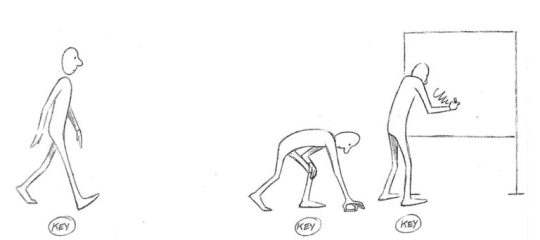
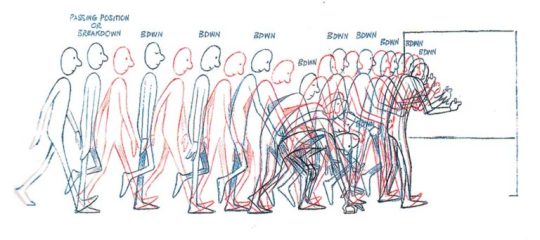
So yeah, it's a lot of work,
....but it doesn't have to be tedious work~ 👀✨
As a hobbyst I live for the philosophy of vibing during the process instead of chasing perfect results, and I'm assuming that you just want to try for funsies and not that you're trying to become a pro industry animator anyways. Here are my personal tips to make the animation process more bearable:
1- Pick something you love! Seriously, any long task becomes more bearable when it's about a theme or character you enjoy. There's a reason why most of my animations have been about HnK or Signalis,
2- SIMPLIFY THAT DESIGN! Before you even pick the pencil, I want you to really look at the design of whatever you're going to animate and ask yourself "Are all the details in this design really necessary?" Every extra detail really starts to add when you have to draw the same thing multiple times for a single second of animation. You don't need to add all the robotic details on replika bodies, or draw every single stripe a tiger has, to put an example.
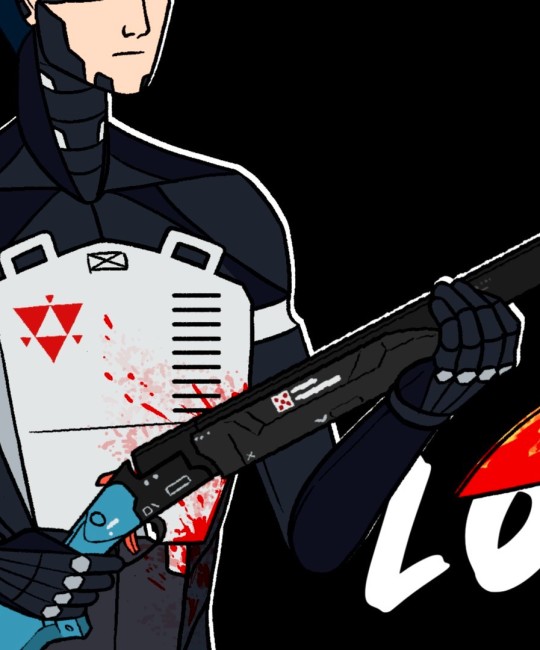
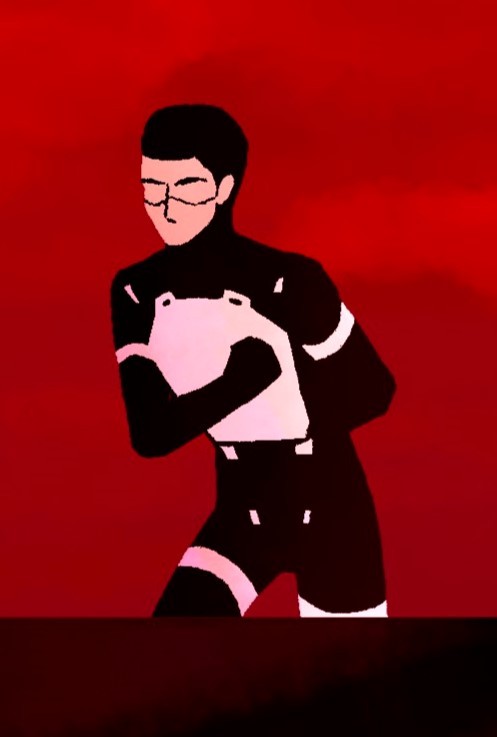
3- Keep it simple! At some point you might have a cool idea of an anime style epic battle with looks of cool explosions, camera angles, awesome fighting choreograpies and whatnot; but you first have to start small or else you'll get overwhelmed and not finish anything (been there, done that). Start with something simple like a bouncing ball, or if you're feeling brave, a walk cycle or a character turning their head. In that same sense, remember the book I linked? Don't try to learn all of it at once, go one step at a time.
4-Use references! On google images there are multiples breakdowns of things like run, flight or walk cycles, for example, and you can even use youtube videos! (tip: pause the video and use "," and "." to move back and forth between frames). In case you need help with a very specific pose or movement, you can use yourself or a friend recreating the pose irl (yes, the process is very embarrasing, and yes, the results are worth it)
4- You don't have to animate/redraw everything everytime. We aren't going for Oscar winning levels of animation here anyways. It's ok to copy and paste across different frames, only animate certain parts of the body and leave the rest static, panning the camera to simulate movement... Listen, if actual standars profesionals cut corners, why can't we? We aren't even getting paid for this!
6- It's ok to suck at first. My first animation was this kitty back in 2016,

and here's this Elster from last year doing similar movements.

It's not perfect by any means, but I feel like both art and animation-wise there has been some improvement. And I guess that right now I could remake it and make it even better, but that's because I got more experience and a better eye at finding mistakes and how to solve them, and you get that with practice.
...So yeah, there's that, have fun in your animation endeavors 👍✨
#OH MY GOD THIS IS A TESTAMENT#I'm so sorry Jay for making you read all of this#I know less that you think#but the little I know I try to share to the best of my habilities#animation#ask#the yappening
13 notes
·
View notes
Text
On a visit to Barnes & Noble in middle school, I asked my mom to buy me “The Book of Jewish Values,” by Rabbi Joseph Telushkin. We weren’t Jewish — though my paternal grandfather was — nor religious in any way. But I was fascinated by the book’s instructions on applying moral principles in day-to-day situations, from citing your sources to quitting smoking. As I got older, I would flip past the esoteric Ethicist pages in the Sunday New York Times and go straight to the etiquette column, where I could learn about the real nuts and bolts of ethical daily living. I loved the logical process involved in deducing the best next step from a broader moral rule.
In college, I charged into adulthood believing the rest of the world was engaged in the same ethical study as I was, taking pleasure in trying to match their actions to their principles. “Of course the basketball team should suspend our best player while he’s under police investigation,” I’d say confidently. “Sports are about character, not winning at all costs!” My Midwestern classmates were not persuaded, to say the least. I began to feel like an alien who had learned about life from books.
By the time the COVID-19 pandemic hit, and many people refused to change their lifestyles in the slightest, I thought I might be completely alone in my convictions. I read Holocaust memoirs, trying to learn how to behave in a world devoid of principles. Viktor Frankl’s work encouraged me to believe I always have control over one small corner of the world — my own actions — even though “decent people … always will remain a minority.” I decided to take an introduction to Judaism class and begin attending a local synagogue’s Zoom services.
At the time, my friends and I worked for employers who emailed us anti-vaccine misinformation, logged our every keystroke with productivity software because they felt sure we’d spend every work-from-home day watching Netflix and, in one case, asked employees to donate PTO to a coworker who became gravely ill after being required to work in the office during a known COVID outbreak. I strained to understand the principles behind any of these actions. (Is fear a principle? Is greed?) One day, I received a different type of email, this time from the synagogue.
Synagogue leadership wrote to inform us that they had made the difficult decision to part ways with a core team member for noncompliance with “an important synagogue policy.” Because vaccines had just become widely available, one could surmise what the policy might be. The policy, the email said, served one of the highest values of Judaism: pikuach nefesh, saving life.
The message felt like seeing another traveler in the desert. Even though it was difficult, the rabbis and the board of trustees had started from a shared moral principle, and then acted accordingly — just like in my beloved Telushkin book. Several months later, I converted to Judaism. I took the Hebrew name Gavriella to honor my personal Jewish hero whose principles transcend her situation, former U.S. Congresswoman Gabrielle Giffords.
Joining a Reform congregation made me realize just how breakable my principles had been when I believed they were mine alone. For example, in college, I dated a guy who vociferously opposed any social plan that did not involve alcohol. Whenever I suggested we take the night off from drinking, he would tell me I was lame and that no one would ever be interested in the types of booze-free dates I proposed. At first, I thought maybe he was right and joined him in drinking to excess, with predictably poor results. Then, I was furious with him for being reckless and cruel to me. It was only years later, after he got sober, that I saw how my reactions hurt both him and me. I was engaging with a diseased idea that deserved neither consideration nor debate.
The position I took — that the desire to be cool is not a good reason to take risks with your health and safety — is a time-tested truism that follows the moral principle of pikuach nefesh. It was not “just like, my opinion, man,” to paraphrase a classic film by two Jewish brothers. If I had understood that my then-boyfriend was not fighting me but the fundamental principles of well-being, I might have been able to react compassionately, recognizing his words as a cry for help.
I believe some principles are universal. As the filmmaker Cecil B. DeMille said, “We cannot break the Ten Commandments. We can only break ourselves against them.” Where we should continue to debate and engage one another is the application of the principles, the “wrestling with God” that defines the Jewish people, so that we can fight dogma, stagnation and injustice. Each time I attend Shabbat services, I’m among other people who have carved that moment out of their lives to focus on the big, important things: What can we do to help the sick? How can we bring more peace to our communities? When I re-enter day-to-day life, I feel stronger and more courageous. During the early pandemic, I even found the words to speak up at work about COVID misinformation.
Millennial and Gen Z women are leaving organized religion in record numbers, many citing oppression against women within some branches of religion, according to research by the American Enterprise Institute. Many religious institutions are due for a reckoning. But we also know an individualistic society rarely works. Even the most determined, self-serious 12-year-old who spends her Barnes & Noble money on rabbinical texts will falter without others who share her values. Becoming Jewish has taught me that we need wisdom traditions and we need community around them, or else we are each rowing our own small boat, susceptible to every shift of the wind.
14 notes
·
View notes
